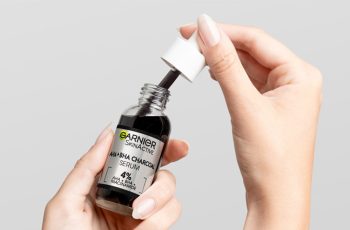
Can You use Retinol After Extractions?
A visit to a spa and having an indulgent facial is admittedly heavenly, but a vast amount of skin experts expresses how having regular facials are detrimental to maintaining overall good skin health. For many of us however, a monthly visit to our favourite spa is not a possible task, so it’s with today’s blog post that we discover how we can keep the impressive results of a facial. We will also be investigating whether you can use retinol after extractions, so without further a due let’s find out more.
Before we dive and find out more, here is a quick recap of retinol and how it benefits the skin.
What is retinol?
Retinol is a form of retinoid that is derived from vitamin A and comes in a variety of strengths that can be found in over the counter products, medical grade, and professional grade skincare formulations. Often mistaken to work as an exfoliant, retinol increases the speed of the natural skin cell turnover meaning it can rid the skin of dead skin cell build-up revealing vibrant skin underneath. You’ll find there are many benefits retinol is able to deliver to the skin, here are some examples of the most common.
Retinol reduces the appearance of hyperpigmentation, dark spots, and sun damage.
Retinol can work in the lower layers of the skin and help boost the production of collagen and elastin.
Retinol can help control the bacteria on the skin helping to combat flare-up in breakouts, spots, and blemishes.
Retinol can target uneven skin texture helping to keep the complexion smooth.
Retinol can combat signs of ageing, such as fine lines and wrinkles.
Retinol can help clear enlarged pores helping them to reduce in visibility.
If you wanted to know more about retinol and its skin benefits, you can check out our dedicated blog post about the potent powerhouse over on The Beauty Insiders.
What to apply after extractions?
If you have had a professional extraction, apart from some slight discomfort during the process as well as a flare-up in redness, the extraction will be quick to heal.
If you are wanting to apply something to the skin after having an extraction, the best ingredient and formula to use is something light weight and enriched in hydrating ingredients, such as hyaluronic acid or niacinamide.
By using these you can sooth and calm the skin whilst locking moisture into place keeping irritants and impurities at bay. If you find you have some post-extraction inflammation, as tempting as it may be, avoid using thick, heavy formulas to prevent the skin from being clogged and inflamed further.
If you are a little concerned about the effects of applying anything to the skin, you are more than welcome to leave the skin until the next day allowing it to naturally rebalance and self-soothe.
How long does it take for skin to heal after extractions?
For most wounds that occur during an extraction, you can expect them to take between 1 to 3 weeks to heal. Bear in mind, this is considered the healing time for extractions that are not performed by lasers or have required stitches. You may find that these take a little longer to heal due to the skin experiencing some alternating effects on the skin’s tone. By this I mean it may take the complexion a little longer to become more even in tone as well as wounds healed.
Don’t hesitate to seek the help from your doctor or a dermatologist if you have any concerns with how the extractions are healing or any worries about which skin ingredients to apply to the skin.
What should you not do after a facial treatment?
There are a few things that should be avoided when you have just experienced a facial treatment. Here are some examples of the things to avoid preventing the skin to become damaged.
Avoid steam rooms
As relaxing as steam rooms may be, exposing your freshly extracted skin to more steam will lead to the skin becoming irritated, red, with flare-up in inflammation. Therefore, any form of exercise or something that can cause you to sweat should be avoided for 24 hours after having a facial.
Avoid sun exposure
With the professional grade ingredients used during your facial heading off to a lay in the sun, or sunbed is a huge no-no. The skin will be more susceptible to sun damage which will lead to an array of concerns, from fine lines, wrinkles, and dark spots caused by sun damage.
Avoid shaving, waxing, or laser hair removal
You’ll find with many facials there is a deep exfoliation, especially if you have had a professional peel. When it comes to any form of hair removal, they also involve some form of exfoliation too. This will be too much for the skin and will result in irritation, redness, and sometimes even burning occurring. To avoid this, try your best to alternate your facials and hair removal on different days.
Avoid potent retinols and at home peels
Ensure you leave enough time in between any professional extractions or facials you have before using at home peels or applying any form of retinol to the skin. This is only because overusing retinols on a skin that has had an extraction or facial will lead to the vital sebum and water needed will be stripped and the skin is left irritated.
How often should you do facial extractions?
This can be very dependent on your skin’s requirements. Those prone to more oiliness and acne will need extractions as regular as every four to six weeks to maintain a healthy skin barrier. As for those who do not suffer from frequent breakouts a facial once or twice a month will be more than enough to keep the clarity of their skin without causing any irritation, dryness, redness, or other reactions.
What should I put on my face after removing blackheads?
You’ll find that once you have removed a blackhead your pore size will appear smaller, this is due to the dirt and oil is removed making it appear less visible. To keep the pores clean you should follow a blackhead extraction with an exfoliating toner, especially if it is enriched with an antibacterial ingredient, such as salicylic acid as this will rid the skin of any remaining bacteria, dirt, and debris found on the skin surface.
Avoid touching the skin as much as you can, leaving the skin to rebalance on its own for 24 hours or help soothe any inflammation with nourishing and soothing ingredients, such as hyaluronic acid.
There you now have a better understanding of how to use retinol after extractions, if you have any more questions you can come and find me over on Procoal’s Instagram.


